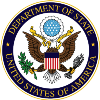Fighting Global Drug Addiction
By: William R. Brownfield, Assistant Secretary Bureau of International Narcotics and Law Enforcement Affairs
Nearly twenty years after the United Nations designated June 26th as the International Day Against Drug Abuse and Illicit Trafficking, illegal drug cultivation, production, trafficking, and consumption continue to plague the globe. Alongside an unprecedented number of global challenges such as climate change, cyber-attacks, and terrorism, it can be difficult to meaningfully focus international attention on this issue. But the effects of abuse and trafficking of illicit drugs can destabilize countries, and entire regions, impeding economic development, weakening national security, and undermining public health.
We know there is a connection between drug trafficking and transnational organized crime and corruption. The demand for illicit drugs, both in the United States and abroad, fuels the power, impunity, and violence of criminal organizations around the globe.
To respond to this significant threat to international and national security, the U.S. Department of State’s Bureau of International Narcotics and Law Enforcement Affairs (INL) brings experts and other resources to foreign countries to help them fight drug-related crime and drug abuse.
INL has supported the establishment, and professional development, of drug treatment and prevention programs around the world for decades. These programs operate in high-risk nations, and focus primarily on providing services for women and children, both of which are chronically underserved and stigmatized groups.
After studying and documenting child drug use globally, INL supported a team of international researchers and doctors in developing the world’s first protocols for treating children with substance use disorders. These treatment protocols are in place in Afghanistan, Pakistan, India, Bangladesh, and Brazil, all of whom face significant child substance-use disorders.
In Afghanistan, where drug abuse rates dwarf those in the rest of the world, INL not only funds prevention and treatment — 76 programs in the past seven years — but has investigated the scope of drug abuse in a concerted effort to seek better solutions. We conducted the first national survey testing over 10,000 citizens in 24 provinces for ten types of drugs. The results identified drug use in 31 percent of households, with poppy derived substances as the most frequently detected drug, followed by cannabis. Among children, the positive rate was 9 percent, with the majority of these positive results being the consequence of adult drug use in the home. The Afghan government is taking this study seriously and using these research results to strengthen national drug policies, and prevention and treatment strategies.
In Latin America, INL and the Brazilian government are tackling the life and death consequences of adding toxic adulterants to cocaine and crack. We developed the world’s first instant test kit for detecting one of these adulterants — phenacetin — which has been linked with red blood cell depletion and kidney failure. Phenacetin and other adulterants added to crack compromise the immune systems in drug users and can result in numerous infections. INL supports the development of additional instant test kits that can detect other toxic substances in drugs, making it easier for public health officials to provide appropriate lifesaving support.
INL works to reduce the demand for illicit drugs as part of a comprehensive strategy to address the interconnected world of criminal activity, violence, and drug use. Our work overseas often intersects with our lives at home. INL supported the World Health Organization and the United Nations Office on Drugs and Crime (UNODC) efforts to update the guidelines for the treatment of pregnant women with substance use disorders. INL provided these guidelines to experts in America as they tackled the rising rate of newborn drug withdrawal in the United States.
Over 60 years of research on substance use has demonstrated that drug treatment and prevention can work. Americans should be proud that the United States oversees 85 percent of the world’s research in the field of substance abuse treatment and prevention. Yet addiction remains misunderstood by many, and misguided practices continue to prevent recovery from drug use. As a result, clients, families, and communities lose hope and confidence in treatment.
INL supports prevention and treatment programs based on science such as the Universal Treatment Curriculum (UTC) and the Universal Prevention Curriculum (UPC). Each of these is adaptable to cultural, religious, and geographical factors and we support their dissemination in more than 40 countries. Another part of this effort is advancing the professionalization of staff by promoting a rigorous examination and credentialing process worldwide. Alongside international organizations, INL supports the creation of an international society for prevention and treatment professionals around the world. This network will facilitate sharing best practices and promote new research across international lines.
Substance use affects all countries, all peoples, and all communities. For the last few years drug use has at least been stable — with 5.2 percent of the surveyed population reporting having used an illicit drug at least once during the previous year according to the UN World Drug Report — but we can do better. There are many challenges before us. On the heels of this year’s International Day Against Drug Abuse and Illicit Trafficking, we should focus on one — drug abuse — for which we have the research, science, and evidence-based practices to implement effective treatment and prevention.
